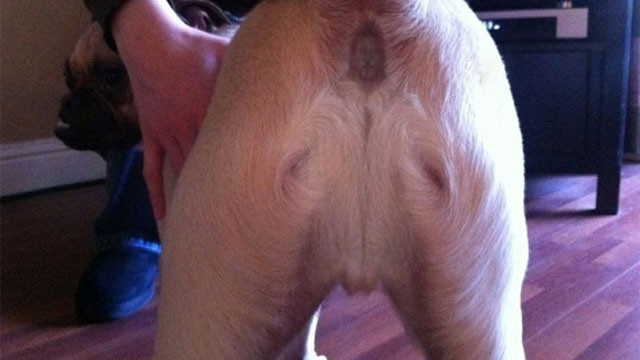Scottish property developer finds Jesus-shaped rock when digging a dog loo
Where else has the Son of God been 'discovered'?

Scotsman Phil Coby unearthed something unexpected when digging a doggy loo in the garden of his Ayrshire home: a rock which he is convinced looks a lot like Jesus.
Property developer Coby, 54, had dug about two feet down when he came across the tip of a rock which had an unusual shape.
You can recognise Jesus through the long hair and shape of his robes. It's the weirdest thing ever
"It's been in the earth for God knows how long," said Coby. "It was covered in muck but straight away I knew it was unusual. I just pulled it out of the ground. I was digging a hole for a dog loo in the garden and found the rock in between two tree stumps. It was buried next to the roots of the trees."
To his amazement Coby realised the rock bore a strong similarity to the statue of Christ the Redeemer in Rio de Janeiro.
"It must have been found for a reason," says Coby. "Other people might have thrown it away but I gave it a good rub. I showed it to my son and asked, 'Who is that?' He said 'Jesus'."
The rock is now on display under a lamp at the Coby family home.
"It's totally natural and glistens under the light," says Coby. "You can recognise Jesus through the long hair and shape of his robes. It's the weirdest thing ever. His robes continue round the back hanging down his back and his hair is long onto his shoulders. It's definitely not man-made."

Images resembling Jesus have previously been spotted on a wide variety of items, including crisps, frying-pans, tacos, Marmite, bananas, in an ultrasound scan and spookily, bearing in mind why Coby was digging, on a dog's bottom.
The Virgin Mary has also been spotted in various places and items including slices of toast, a sandwich and a building in Clearwater, Florida.
Psychologists believe such phenomena is common because the human brain has a tendency to perceive random images as significant, particularly anything which resembles a human face. This psychological tendency is known as pareidolia. The scientist Carl Sagan wrote that the tendency to "see" faces is a result of evolution.
In The Demon-Haunted World Sagan wrote: "As soon as the infant can see, it recognizes faces, and we now know that this skill is hardwired in our brains. Those infants who a million years ago were unable to recognise a face smiled back less, were less likely to win the hearts of their parents, and less likely to prosper."
© Copyright IBTimes 2025. All rights reserved.






















